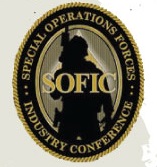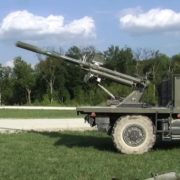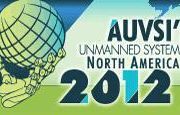 A familiar cliché in autonomy research is that we want unmanned systems to be like a dog, i.e. independently capable of some tasks, but fundamentally subject to the control of a human operator. Researchers at Auburn University evidently felt “like a dog” wasn’t adequate and went for the real thing.
A familiar cliché in autonomy research is that we want unmanned systems to be like a dog, i.e. independently capable of some tasks, but fundamentally subject to the control of a human operator. Researchers at Auburn University evidently felt “like a dog” wasn’t adequate and went for the real thing.
They rigged up a dog with an “…embedded command module with vibration and tone generation capabilities and an embedded control suite. The control suite is comprised of a microprocessor, wireless radio, GPS receiver, and an attitude and heading reference system. A canine maximum effort controller was implemented for autonomous control of the canine, which proved to be effective at guiding the canine to multiple waypoints.” (A system for autonomous canine guidance)
Essentially, the researchers wanted to establish Non-Line-Of-Sight (NLOS) control over the dog, without direct input from the human operator. The dog was trained to perform certain actions (i.e. “turn left”) in response to tones and vibrations issued by its computerized harness. In both structured and non-structured environments, the performance of the “cyborg dog” for reaching waypoints over specific paths was excellent. This type of computerized harness could enhance the capabilities of rescue and other working dogs.
This experiment illustrates the unpredictability of technological innovation. Technology developed for unmanned systems is being used for an unexpected application, i.e. dog guidance. All technological innovators, including ones for unmanned systems, are in the position of creating products that serve a purpose not for today, but for the future. Essentially, they are trying to hit a moving, if not invisible target. The “cyborg dog” illustrates that they may hit targets they didn’t even know existed.
When I first read about this experiment, I was struck by how many problems a canine platform solves. For one thing, a dog has a great built-in sensor package. It already possess internal mapping and most dogs have got the “follow me” behavior down pat. We don’t have to teach them how to navigate around obstacles such as small rocks. Their balance is already good. We don’t have to undergo the lengthy tedious process of teaching an unmanned system to think and behave like a dog, if we simply used a real dog.
Of course, purely mechanical unmanned systems are needed as well as hybrid ones. However, the researchers at Auburn displayed a quality that is often undervalued in science and engineering: imagination. We sometimes get so focused on solving a problem or completing a project that we ignore solutions that don’t fit our mind set.
Let’s use an example from the field of drug development to contrast “limited-mindset” behavior with a more imaginative approach. About 60 years ago, the only known treatment for the severe pain of rheumatoid arthritis was a steroid called cortisone. It could only be obtained from oxen, making it extremely expensive. In those days, cortisone cost 100 times the price of gold.
A worldwide race ensued to perfect a cheap way of synthesizing cortisone in the laboratory. Like many complex projects, the last step proved frustrating. Scientists simply couldn’t figure out a way of inserting an oxygen atom into just the right place of the precursor compound.
Finally, in 1951, teams from Harvard, Merck and Syntex declared they had solved the problem. With dreams of Nobel prizes, magazine covers, and untold riches, they announced they had perfected the final steps in the laboratory synthesis of cortisone.
Some of their dreams came true, but not the one of commercial success. Far away from the hallowed halls of academia, Midwestern researchers for Upjohn had created a “workaround” for that pesky last step in cortisone synthesis. They brewed huge vats of a mold that produced an enzyme that naturally inserted the oxygen. While the laboratory synthesis took 15 steps to create small amounts, the fermentation process took one step to yield large quantities. At a time that cortisone cost $4,000 an ounce, Upjohn made discreet inquiries if anyone was interested in distributing tons of the stuff.
In modern parlance, Upjohn thought “outside the box.” Why try to recreate a process in the laboratory that evolution took millions of years to develop? The laboratory-oriented team may have gotten the scientific glory, but Upjohn got the money.
To be fair to unmanned system developers, many researchers are actively imitating processes found in nature. We’ve seen an unmanned system based on spinning maple leaves, as well as bizarre hybrids, such as remote-controlled cockroaches. However, too many people confuse professional rigor with closed-minded thinking.
Since AMREL does a lot of customization, we understand the importance of creativity in developing unmanned systems. One of our clients didn’t like the peripheral antenna on his control solution for an Unmanned Ground Vehicle (UGV). He thought it was necessary, because onboard emissions compromised operating range. We created a way of integrating radio control modules into a laptop’s device bay. The module is shielded, so the solution’s operating range is just fine. The peripheral antenna was replaced by an integrated solution.
It’s our ability to be creative that has enabled us to dominate the Operator Control Unit (OCU) field; most UGVs in Afghanistan and Iraq used AMREL OCUs.
Like the Upjohn team and the Auburn researchers, we learned to think outside the bot.








